Through the 'Looking Glass': The Story of The La's
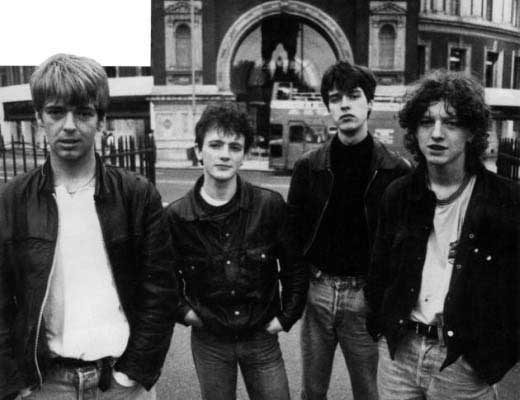
The story of The La's is a fascinating one. It’s about great songs, twelve studio sessions, seven producers different producers, a touch of 1960s dust, plenty of fallouts, twenty-four band members, a million pounds and just one album. An album that has been mythologised beyond belief, and an album that the band's main songwriter can’t stand.
Formation & Early Days: 1983 to 1986
The La's formed in 1983, formed by Mike Badger in Liverpool. He stated that the band name came to him in a dream. La in Liverpool is used as an abbreviation for "lad", so The La's in simple terms just means "The Lads". With Badger, the band existed as an arthouse/skiffle-type outfit with a few tracks released on local compilations. Badger was the group's primary songwriter, and a year later in 198,4 he would draft in Lee Mavers to be his rhythm guitarist.
A couple of years later, Mavers was emerging as a songwriter in his own right. Marking himself as the band leader. Bernie Nolan, accomplished musician formerly of the Falcons, The Russian Rockabillys and The Swampmen, was the original bassist. John Power joined the group in 1986, having met Badger on a local council-run musicianship course. Tensions within the group began to rise with Badger and Mavers fighting for control. After some arguments, Badger walked. Badger's songs had been slowly being removed from the setlist.
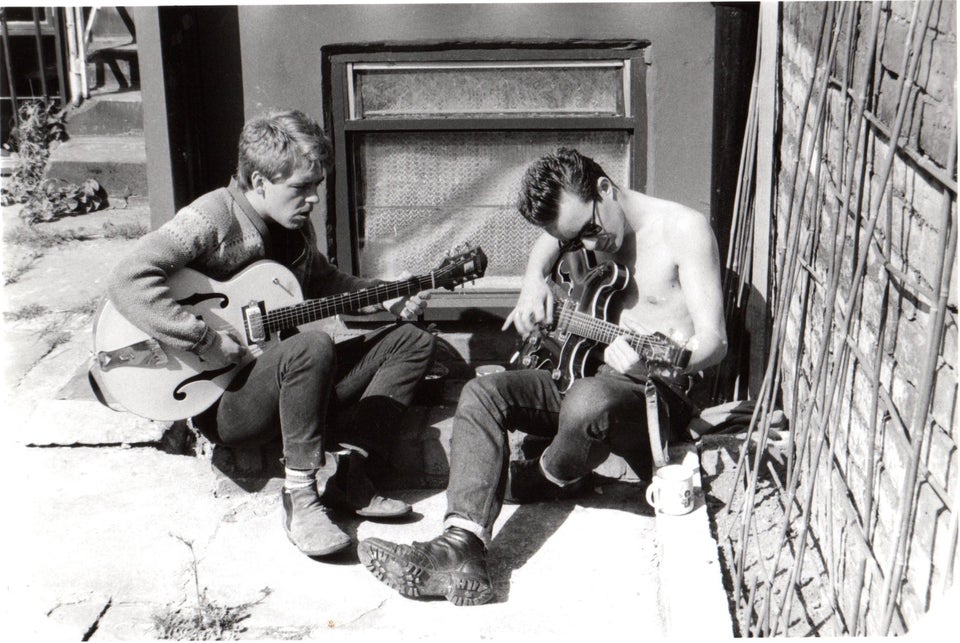
In a 2021 interview with the BBC, Badger said, "We'd done all of the work, and that's when the problems started [Mavers] said to me, 'Your time is nearly up in this band. I was like what? It's not your band mate! I said I'm off, packed my guitar and got on the bus. I was gutted, two years' work gone overnight."
With Badger gone, Mavers took the lead, a new guitarist, Paul Hemmings, was bought in on the recommendation of John Power.
The reassembled La’s took to rehearsing in a stable's outbuilding courtesy of Hemmings’ mother, to whom the new collection is dedicated. Hemmings says, “Obviously, Mike took all his songs with him. It was a wonderful time to be in the band, because Lee actually had to write material, and we had to finish it. There was no deliberation. Every single day, there was me, John and Lee in the stables, working on stuff.”
It was here that the band would write and work on some of the songs that would end up on the debut album. In an interview with Northern Soul Magazine, Paul Hemmings said. That was where 'There She Goes' was written, 'Timeless Melody, Way Out, all these fantastic songs we formulated there. I think it was just one of those times where all the stars aligned and everything felt quite right.”
'Over', a song that would later become the B-side to 'Timeless Melody', would be recorded in the stable.
“Lee loved Over,” Hemmings says. “My mum had bought me this ghetto-blaster tape deck and I used to record everything on that, just to remember things basically, little fragments of ideas. 'Over' came together incredibly quickly. It was a lovely hot summer’s day. We turned it o,n and it just happened. The whole thing just flowed. That’s one of those moments which you could never recapture. You record it the first time, and you never get it again.”
Despite being relegated to a B-side, 'Over' became the benchmark for The La's, and it caused them a whole host of problems later down the line.
The band attracted the attention of several record labels after a series of performances in their hometown in 1986, and demo tapes copied from a session at the Flying Picket rehearsal studio in Liverpool began circulating. One of these demo tapes was sent to Underground Magazine. A journalist there with the task of reviewing unsigned bands gave the cassette to Andy McDonald at Go! Discs. Several record labels later became interested in signing the band. The band chose to sign with Go! Discs.
Go! Discs & The First Two Singles- 1987 & 1988
After signing with Go! Discs, the band got to work quickly, their first single, the waltzy desire for escape, 'Way Out', in October 1987. However, despite its release, Mavers was not happy with the sound of the single. This would become a recurring theme.
'Way Out' was recorded by Gavin MacKillop at Townhouse Studio, but not before a failed session with John Porter at Matrix Studios a couple of months earlier.
He was an advocate of lo-fi before it was even widely recognised as a concept. What he sought was a warm, analogue sound brimming with life, the natural hisses and hums reminiscent of early mono singles by The Who and The Stones. To Mavers, some of The La’s rough demos captured that spirit, even with their flaws. But in an era dominated by digital recording and synthesisers, few studios or producers could deliver what he envisioned.
The song broke into the UK Top 100 and was praised by The Smiths frontman Morrissey in Melody Maker. However, the song did not gain much notice from those outside of their native Liverpool. Despite this limited single success, the band would head out on the road across the country, increasing their reputation as a live act.
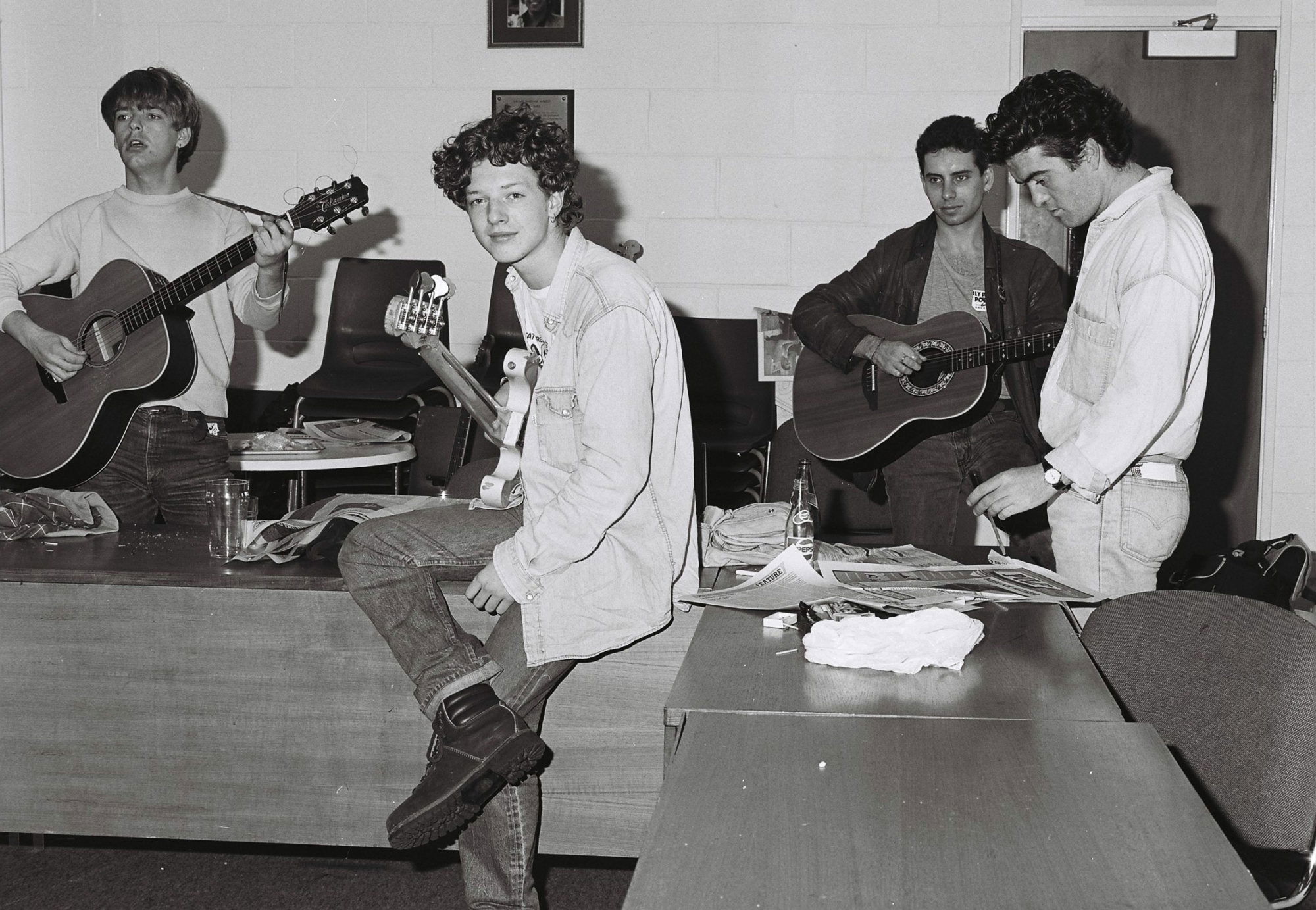
One of the most famous gigs the band played in 1987 was at The Picket in Liverpool, although a couple of months before, the band had signed their contract with Go! Discs. It was one of the band's most important live dates, with a setlist that would go on to be the band's for many years after. It was also the first time the band ever played their second single live. 'There She Goes' would get it's first live outing.
Written in Hemmings' stable in 1987, the song was constructed around an ever-cycling riff, and a loved up lyric about an unattainable girl. Hemmings would add a complimentary riff on top, and with some nods to the Velvet Underground's 'There She Goes Again', it was complete.
A near-perfect two and a half minutes of indie jangle pop. A romantic yearning affair that everyone believed could be a hit. Those who first heard the song at The Picket, in June 1987, knew there was something special here.
Despite referring to the female 'she' throughout the song, some believe that Mavers is not referring to a woman, and instead, the drug heroin. With a couple of lines being the centre of this theory. "Pulsing through my vein/And I just can't contain/This feelin' that remains."
Despite these theories, all band members have denied that the song is about heroin. Paul Hemmings said in an interview with Udsicover music, "Also, one thing I want to get straight for good about ‘There She Goes’ is that whatever it is about, it’s absolutely not about heroin. There’s been a lot of speculation about that for many years, but Lee told me emphatically that it isn’t about heroin during a long train journey from London to Liverpool we shared during 1995."
Mavers would have his moment with heroin, but at the time of writing 'There She Goes', he did not have enough money for heroin. His songwriting around this time was informed by something else entirely. It was more cosmic, saying in a 1990 interview with Melody Maker.
"The phrasing, the rhythms just come to me. And then I trace over them, like with tracing paper, the words and melody. I usually take five minutes to write a song; it just happens. It's like a medium; his mind takes over. It's when he's not there he gets all his information, right? I'm not talking about drugs or anything, but the subconscious is always better than the conscious. There's star material, not like pop star shit; there's a light in all of us. You've just got to levitate to the right level."
The song was fully formed at the 1987 Picket show, although the middle eight was different. It would take the band around a year, three different studios, and three producers before the song would be released. After a supposedly unusable session with Cure producer David M. Allen at Ezee Studios in London in October, they tried again with John Leckie at Chipping Norton Studio in March 1988, a few months before he started work on The Stone Roses’ debut.
Leckie was asked about working with the band and said this, “Lee was also inclined to talk in a kind of Scouse psychobabble. He’d spend half an hour describing the way he’d want the guitar to sound, things like wanting to capture the sound of the tree it was made from. Or he’d decided he didn’t like a particular cable because it was yellow. John Power was a bit like that, too, but when he did it, there was an element of humour. Lee seemed serious.” Mavers knew his songs were good. But in the studio, he was never able to capture the feel of his demos.
Go! Discs became annoyed with the band burning through label money, and temporarily docked the band's wages. This setback, plus playing the same songs over and over again, hoping for a different or better result, caused the band's drummer, John "Timmo" Timson, to walk away from the band in late 1987. The La's cycled through a couple of drummers before settling on Chris Sharrock in mid-1988.
Hemmings would also leave the band before the band recorded the single version of the song. The guitar on the track is being played by John "Boo" Byrne. In the 2003 book In Search of The La's: A Secret Liverpool, Hemmings said, "It's hard when you're repeatedly trying to capture in the studio, something that had a great degree of spontaneity to it, as those early demos did. That was quite frustrating for Lee. You went into studios and it just didn't capture it, you didn't get the same sound."
In July 1988, The La's set about recording 'There She Goes' with Bob Andrews at Woodcray Studios in Wokingham. Andrews had worked with Jona Lewie, Tenpole Tudor, and the The Bluebells. He found Mavers his most challenging musician. By this point, Mavers was asking engineers to set up microphones in trees, and in another session, inside a Steinway piano, in the hopes that they could pick up the vibration of the strings as he sang into it. He also had become adamant that concert pitch was incorrect, and began tuning his guitar to the frequency of refrigerator buzz.
Andrews said of the sessions, "While we got on quite well, he was hard to deal with. We were in a residential studio, so after dinner I might mention something the song needed and Lee would be, ‘Right, let’s do it now.’ And we’d go back in the studio at 11 o’clock at night. Then the next day he might not like it, then another day he might like it again. But I had to strike while the iron was hot."
The single version of the song was claimed from the sessions with Andrews and released in November 1988, a whole year after the band's debut, 'Way Out'. It failed to crack the UK Top 50.
Recording the Debut: 1989-1990
By July 1989, The La's had made two failed attempts to record a debut record. Both in Liverpool, the eight-track Attic, where they self-produced and the Pink Museum with producer Jeremy Allom. Go! Discs retrieved. A third single, 'Timeless Melody was retrieved from the session at the Pink Museum.
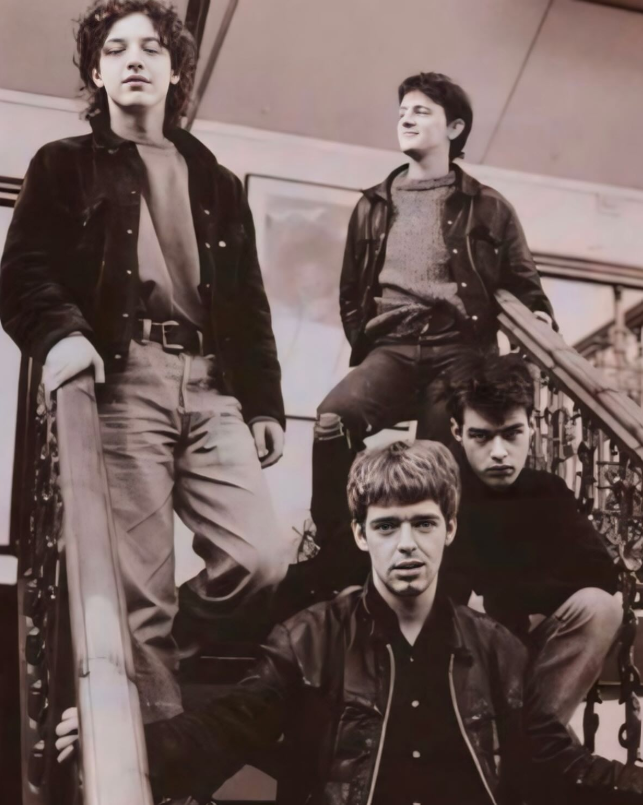
This was printed, and copies were sent out to the radio and press. Melody Maker named it as Single of the Week. A song about songs, amongst the band's lush harmonies and sparkling jangly guitars, it delves into Maver's divine songwriting process. However, it didn’t sound just right, so Mavers forced the label to withdraw the single at the last moment.
Now his perfectionism had become paranoia; the band had existed since 1983, it was now mid-1989, and they'd released two singles. Perhaps the songs he'd been talking up in the press were not as good as he first thought. It seemed the band had a stable lineup, and in the eyes of Go! Discs had had more than enough time to record a debut.
Andy MacDonald, the label owner, set them up with Mike Hedges. Hedges had produced some of the Early Cure and Siouxsie and the Banshees records. Including 'Seventeen Seconds', 'Boys Don't Cry' and 'Peepshow'. This may seem like an odd choice for The La's, not being reverby post-punk types. However, Hedges had recently acquired a 16-channel mixing desk that had been used at Abbey Road. The desk had been used to record John Lennon's 'Imagine', Pink Floyd's 'Dark Side of the Moon' and Kate Bush's first two albums.
MacDonald hoped that this would help The La's find the sound that they wanted. Hedges and the band, now made up of Lee Mavers, John Power, Barry Sutton and Chris Sharrock. Headed to MacDonald's parents' house in Devon, complete with the desk and set about re-recording the songs. It seemed promising, the band were happy. Lee loved the sound of the songs.
Then, MacDonald made an error. Power described what happened to Uncut Magazine in 2024: “Everyone thought it was great. Lee loved it. Andy was buzzing. Then Andy gave me and Chris £800 or something each to go on holiday. I think he wanted us out of the way so he could get in Lee's ear to mix it, but if so, it backfired. Lee got the hump because he didn't come on holiday with us. When we got back, he'd scrapped everything."
These sessions with Hedges were probably the closest the band ever got to Maver's ideal sound. He has since said that shelving them was an attempt to take back control of his band, that, as they had briefly left for Hawaii, they weren’t as committed to the music as he was.
At the time he commented to the media, his print the legend excuse was that the desk wasn't coated in authentic 1960s dust, so of course it couldn't sound right.
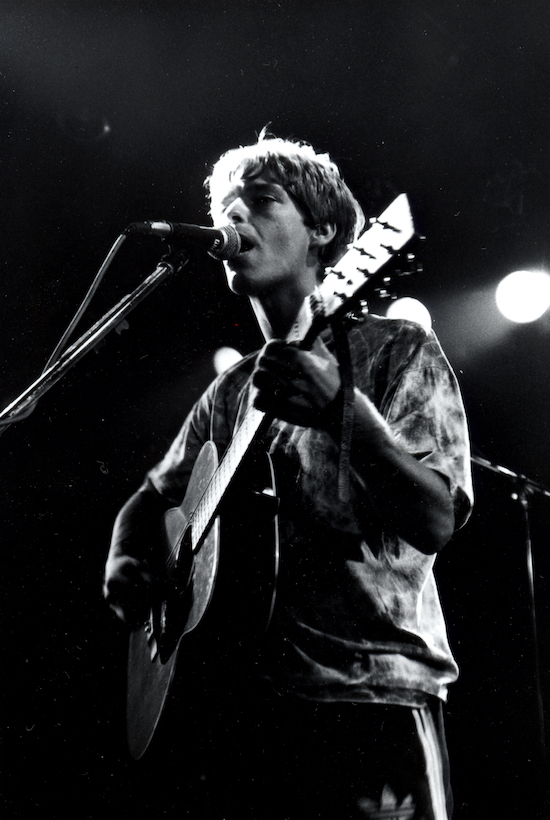
Barry Sutton had been in the band for eleven months and had attempted to record these songs on three separate occasions. He became increasingly bewildered with his position in the band. Mavers had him play certain portions of songs ten different times with emphasis on ten different parts, leaving Sutton confused about what Mavers actually wanted and whether it was actually possible for him to achieve it.
In a 2021 interview, Sutton commented on his time in the band: "I don't want to make Lee out as a bad guy, because he’s very funny. But the atmosphere he creates isn't conducive to people doing their best work. There's a lot of attention paid to the exact phrasing of parts, strange guitar tunings, and a lot of pressure. My playing was suffering; I was deeply paranoid all the time. When I was sacked, it came as a relief."
Sharrock also left the band after the failed sessions with Hedges.
Sutton and Sharrock were replaced by Peter “Cammy” Camell on guitar, and Lee’s brother, Neil Mavers, on drums.
In December 1989, the band had a final crack at recording their debut album. Six years after they had formed. The La's headed to London to record in Eden Studios with XTC, Peter Gabriel and U2 producer Steve Lillywhite. Mavers was impressed with Lillywhite at first. Talking to Sounds in January 1990, he called him “patient, he’s got focus and he's a producer in that he sets the environment that we work best in.”
However, despite this mutual respect, Mavers got in his way. Lillywhite said in 2011: “I knew the songs were absolute diamonds, but getting them on tape wasn’t so easy. Lee Mavers had this blueprint in his head for the record, but it was like an acid trip that kept coming back to him, and it would mess him up. We’d record six fantastic songs, but if there was one thing wrong on the seventh, he’d be convinced that everything else was terrible, and we’d have to start everything all over again.”
Lillywhite would use a different approach than what The La's were expecting, and it was one they didn't enjoy. He expected to record piecemeal and use click tracks. The La's wanted to sound live and organic. Despite this conflict in approach, the sessions still seemed to be going well.
According to Mavers, the sessions broke down when he found a dossier titled A Producer’s Guide To Dealing With Lee Mavers, a list of dos and don’ts to temper his more eccentric tendencies. A blow-up ensued, resulting in the band walking out of the sessions, never to return.

In the three years since 'Way Out', The La's had gone through eight producers, nine studios, numerous bandmates, and had cost their label at least a million pounds, and they had no album to show for it. Go! Discs, had enough; they'd allowed their band to follow their artistic beliefs, their pursuits for perfection, and even dealt with their frontman's paranoia and received nothing in return. 'There She Goes' at this time was two years old, and the last attempt of a single release had been blocked.
In an attempt to recoup some of what had been lost, the label rehired Lillywhite and asked him to put together a record from the available tapes. It was released as the band's self-titled debut in October 1990. Neither the title, artwork, nor tracklist was chosen by the band. But still, it featured twelve songs that they'd spent their career trying to capture on record.
The Merseybeat of 'IOU', the cribbed Beatles riff of 'Feelin', which bears very close resemblances to the Fab Four's 'I Feel Fine'. The Kinks inspired music hall march of 'Freedom Song', and the song that seemed to resemble their frontman 'Son of a Gun' was written about a man stuck inside his own head. 'There She Goes' was re-worked and is now the version many of us know. Maver's finest moment as a songwriter appears at the end of the album, though. 'Looking Glass' is a etheral seven and a half minute epic about the passing of time. “The past, it never says it/it never makes a sound/whispered ways were chosen/echoes will be found”
A spacey emotional affair, where Maver's reveals himself to the listener like he has never done before, and I doubt he ever will again. "I’m in everybody, everybody’s in me… I see everybody, everybody sees me… in the looking glass, the glass is smashed."
The song's final line, "The change is cast", would have a particularly profound impact on John Power. More on that later.
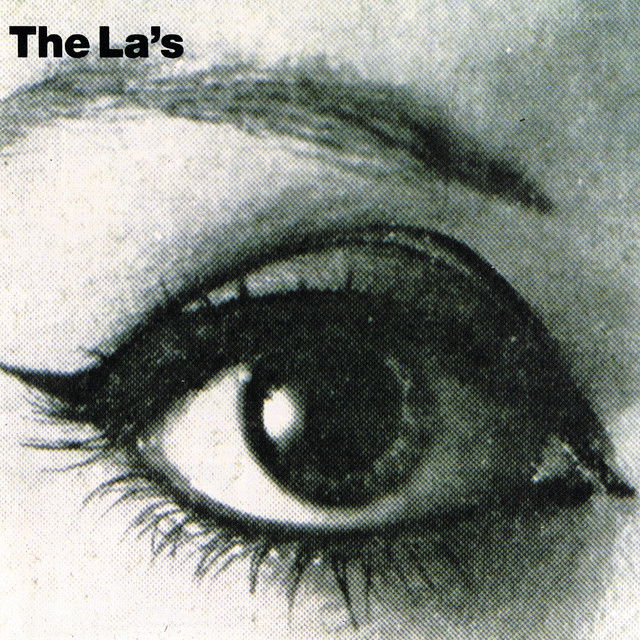
Upon its eventual release, the album was greeted with warm reviews and entered the UK Album Chart at Number 30. Preceding its emergence, Go! Discs tried again and wrangled the Lillywhite version of 'Timeless Melody' to an actual single release, peaking at number 57 on the UK Singles Chart.
Maver's quickly disowned this version of the album. He would spend every promotional opportunity and interview telling the listening public his views on it, and telling them that they shouldn't buy it. In a 1990 Melody Maker interview, he said, "It's the worst thing I've ever heard, bar nothing. I can detach myself from it, and it's unmusical, it's out of tune, and the worst thing about it is the singing, because they took the backing tracks from the first two weeks we were in the studio and used the guide vocals. It's flat, out of tune, out of time. I wouldn't have minded what they've done if it sounded good!
Following the release of the album, a re-release of 'There She Goes' at the end of October 1990 would hit the UK Top 20, two years after its original single release. The song remained in the Top 20 for three weeks. Helped in part by Radio DJs playing it to celebrate Margaret Thatcher’s concurrent resignation.
All Change 1991- Today
In 1991, the band spent six weeks touring the US, Canada and Japan, Mavers deferring most of his interview duties to Power after journalists continued to quiz him on why he hated his own album. However, some changes were happening. While The La’s setlist had remained pretty much the same 15-20 songs for the last five years, Power began to push for change. He'd begun writing songs and wanted the band to play them
But like before with Mike Badger, Mavers was unwilling to cede control. When they played a show at the Town & Country Club in London, Mavers refused to sing the harmonies on 'Follow Me Down', a song written by Power.
Power to Q Magazine in 1997 said, "It was guitars down and head-to-head between me and Lee. It was always, y’know, If you’re not going to sing on my song, I’m not gonna sing on your f__king song. Just schoolyard shit, like… So I just started shouting into the mike, Sing the f__king backing vocals, and then we stopped and it all went off.”
Power had been one of the only people to stick with Mavers throughout the full length of their studio sessions, but by December of 1991, he, too, had had enough. He left the band and formed Cast in 1992 with Pete Wilkinson, formerly of Shack. The band's name was taken from the last word ever sung on a La's record. Cast would go on to have great success in the 1990s. By 1994, the band secured high-profile support slots with Elvis Costello on two UK tours, including 2 nights at the Royal Albert Hall, as well as a support slot with Oasis. It was during the tour with Oasis that Polydor head of A&R Paul Adam, surprised that the band had not already been snapped up, approached the band to sign them. The band signed to Polydor on 13 December 1994, three years to the day that Power left The La's.
The band released their debut single 'Finetime' in July 1995, which went straight in at No. 17. The follow-up single "Alright", a song originally written and performed a handful of times whilst still in The La's under the original title 'Fly On' became the band's first Top 15 hit in the UK, peaking at No. 13 in the singles chart.
The band's debut album 'All Change', released in October 1995, was produced by John Leckie, who had previously worked with The Stone Roses and The Verve and had also previously worked with Power in The La's. The album shot to No. 7 in the UK charts, reaching double platinum and went on to become the fastest-selling debut album in the history of the Polydor label, outselling the likes of The Jimi Hendrix Experience, The Who and The Jam. A further two singles were taken from the album in 'Sandstorm' (No. 8) and 'Walkaway' (No. 9), both top ten hits. A stand-alone single was released in October 1996 titled 'Flying', which reached No. 4 on the UK singles chart, giving the band their highest chart position in the UK yet.
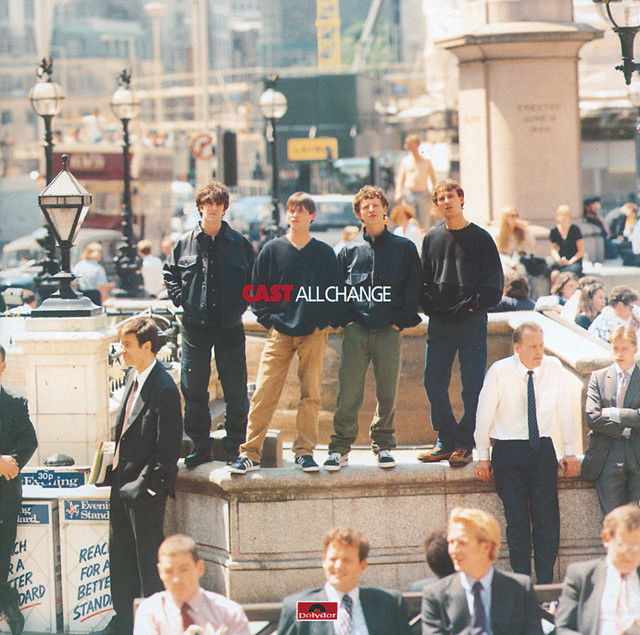
With their second album Mother Nature Calls, released in April 1997, the "rockier material was now sounding looser and cockier in a Stonesy or Faces-ish way and the moodier tracks awash with melancholic atmosphere". The band worked again with John Leckie. The album peaked at No. 3, reaching platinum and stayed in the Top 40 for over 6 months. The album spawned three top ten hits in "Free Me" (No. 7), 'Guiding Star' (No. 9), 'Live the Dream' (No. 7) and one top twenty hit with the fourth single from the album 'I'm So Lonely' (No. 14), a ballad written during a period of bleak loneliness in a Japanese hotel room.
Cast had managed to do two things. The La's hadn't. Chart and chart well and release a second album.
Though The La’s pretty much ended after John Power left, there were still fleeting appearances from Mavers. The band supported Oasis in December 1994 with Cammy now playing bass, and recruit Lee Garnet on guitar, the band just jamming on “There She Goes” over and over again while high. The power being cut after they had long exceeded their stage time. Rumours swirled that Mavers was deep into heroin, had a personal collection of authentic 60s dust, and, perhaps the most troubling, was that he was still attempting to record their first album.
After the release of 'Way Out' in 1987, the band were heralded by many as ones to watch. If their debut had arrived that year or even in 1988, the band could have started a resurgence in British guitar music in the UK and America. Instead, in the time it took The La’s to release one album, Madchester bands The Stone Roses and Happy Mondays emerged, rose and were on the way out. They had delayed for an entire musical movement.
In 2003, La’s fan MW Macefield attempted to track down Lee Mavers, now a reclusive figure rarely seen in public. And through interviewing his former bandmates, he draws his own conclusions about his hero, this Syd Barrett/Brian Wilson character who has lost himself in the creative process. So when he did finally find him, an Everton-supporting father of four living in an unassuming semi-detached house in the suburbs
of Liverpool, it came as quite the surprise. No heroin, no 60s dust. Just living off the royalties of the various versions of 'There She Goes', still with designs to get his album made.
A couple of years after the release of the book, Mavers and Power reunited and, alongside ex-Cracatilla frontman Jay Lewis (guitar) and Nick Miniski (drums),began playing dates as The La's in England and Ireland ahead of an appearance at the Summer Sonic festival in Japan as well as a spot at the 2005 Glastonbury Festival and other UK festivals.
After three concerts, Miniski was replaced as drummer by roadie Jim "Jasper" Fearon, who was Mavers' school friend and one-time bass player for the La's. The set lists were mostly the same as in the late 1980s, although certain encores contained some previously unheard songs such as 'Gimme the Blues' and 'Sorry'. Since the reunion gigs, it has been rumoured that Mavers has continued working on the La's' elusive second album. When interviewed in August 2006, John Power explained that Mavers was still "tinkering with something majestic" and of the release date, "I can’t tell you where and when...' cos whatever he does, whether it’s in this lifetime or the next, it can’t be rushed".
A compilation of the La's' live radio sessions, BBC in Session, was released on 18 September 2006. In 2008, a new deluxe edition of The La's was released containing the lost Mike Hedges album, alternate recordings, and live recordings for radio and television, including previously unreleased songs 'I Am the Key' and a Buddy Holly cover 'That'll Be the Day'.
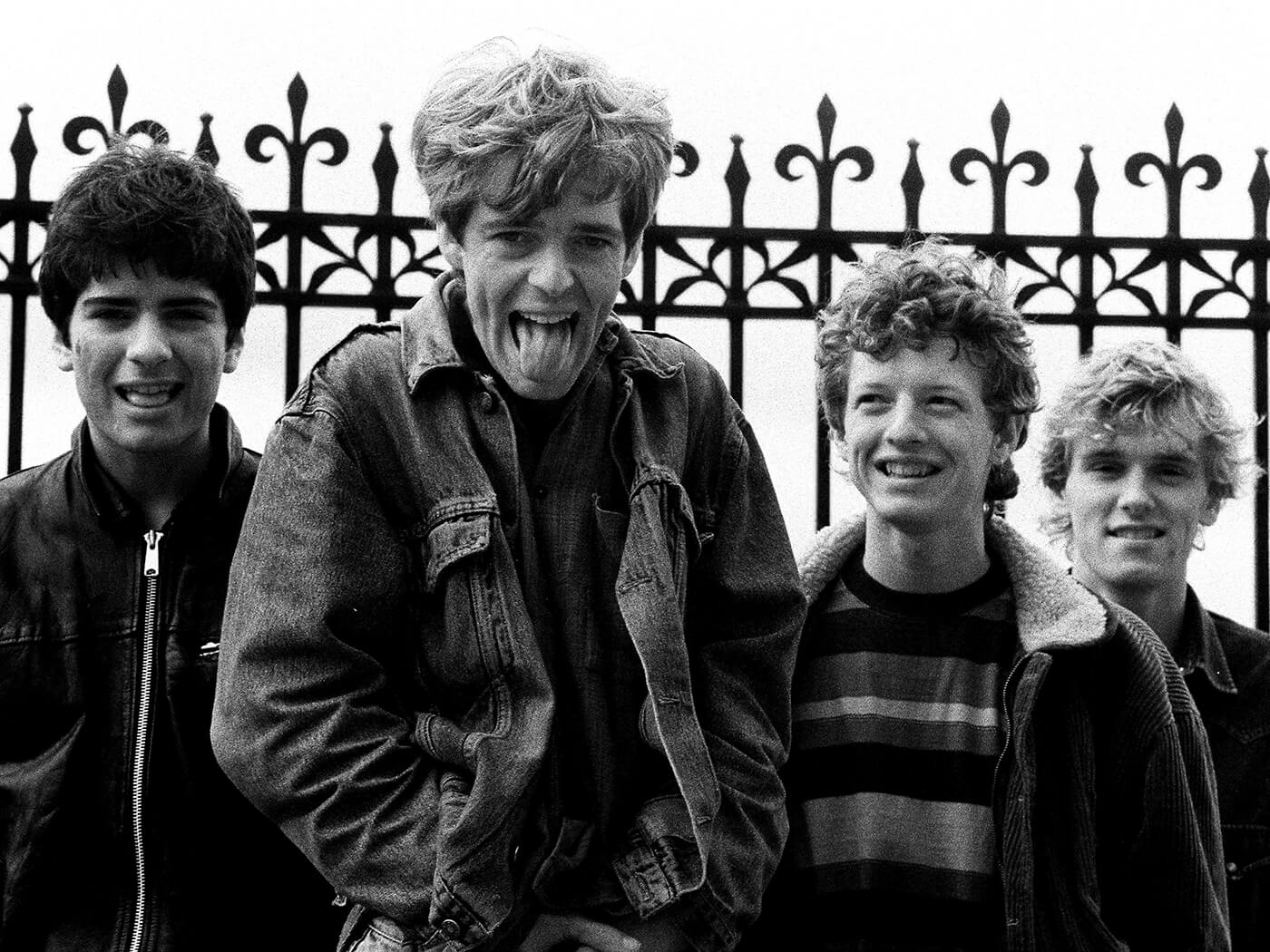
After being introduced to each other by Gary Murphy of the Bandits, Lee Mavers began jamming with Pete Doherty in 2008. In 2009, Babyshambles drummer Adam Ficek revealed plans for the La's' second album to be recorded with the Babyshambles as backing band. This supposed lineup did not materialise,e and live appearances were cancelled.
In June 2011, Lee Mavers, accompanied by Gary Murphy on bass guitar, played a surprise concert in Manchester under the name Lee Rude & The Velcro Underpants. Following this, Mavers and Murphy reformed the La's and played a series of "stripped back" shows across the UK and Europe, including a performance at Rock en Seine festival in France in August 2011.
35 years since the release of 'The La's', a follow-up record seems less and less likely, and that's a real shame. Despite being hated by its frontman, those songs are sensational pieces of British pop. Some of the bootlegs and demos of songs that were supposed to have made the second album are absolutely breathtaking. In a 2008 interview, Steve Lillywhite refers to one of these songs: 'Fishing Net'
A truly breathtaking piece of Beatles-esque guitar pop that equals anything on the debut, which I highly doubt will get an official release.
Impact & Legacy
Many music journalists often claim that 'There She Goes' is the birth of Britpop, and it's easy to see why. The genre, with its backwards-looking musicality and chiming guitars, was extrapolating what Mavers did. The entire seam of half-acoustic, half-electric rock from the '90s and beyond owes at least some of its sound to The La's. In simple terms, it's a continuation of British pop.
Oasis's 2005 Number One 'The Importance of Being Idle' pilfers its introduction from The La's 'Clean Prophet', which itself sounds remarkably similar to The Kinks 'Sunny Afternoon'.
Noel Gallagher has been explicit in his love for the band. Alongside The Beatles, Stones and Roses, The La’s were one of Noel Gallagher’s favourite bands. Mere weeks after Oasis released 'Supersonic', he stated that “Oasis want to finish what The La's started".
In more recent years, he has commented on Mavers directly. When I see him, I say, ‘Hey Lee, when are you going to release your second album?’ And he goes, ‘Yeah, yeah, yeah. I’ll do it when I’ve finished the first one … He’s still trying to nail his first set of songs right after 27 years. So I’ve come to the conclusion he’s either shit-scared of ruining his legacy or he’s just a lazy c__t.”
The La’s impact stretches far beyond Oasis; their stripped-back sound and melodic sensibility were foundational to the rise of Britpop. Bands like Blur, Pulp, Suede, and The Verve all absorbed elements of their jangling guitars, sharp songwriting, and raw honesty. Beyond the 1990s, their influence carried into the 2000s and beyond—artists such as The Libertines, Arctic Monkeys, and Jake Bugg drew inspiration from their blend of indie grit and classic pop craft. Even newer acts like Fontaines D.C. reflect echoes of The La’s restless energy and timeless approach to songcraft, proving that their legacy continues to ripple through British and Irish guitar music.
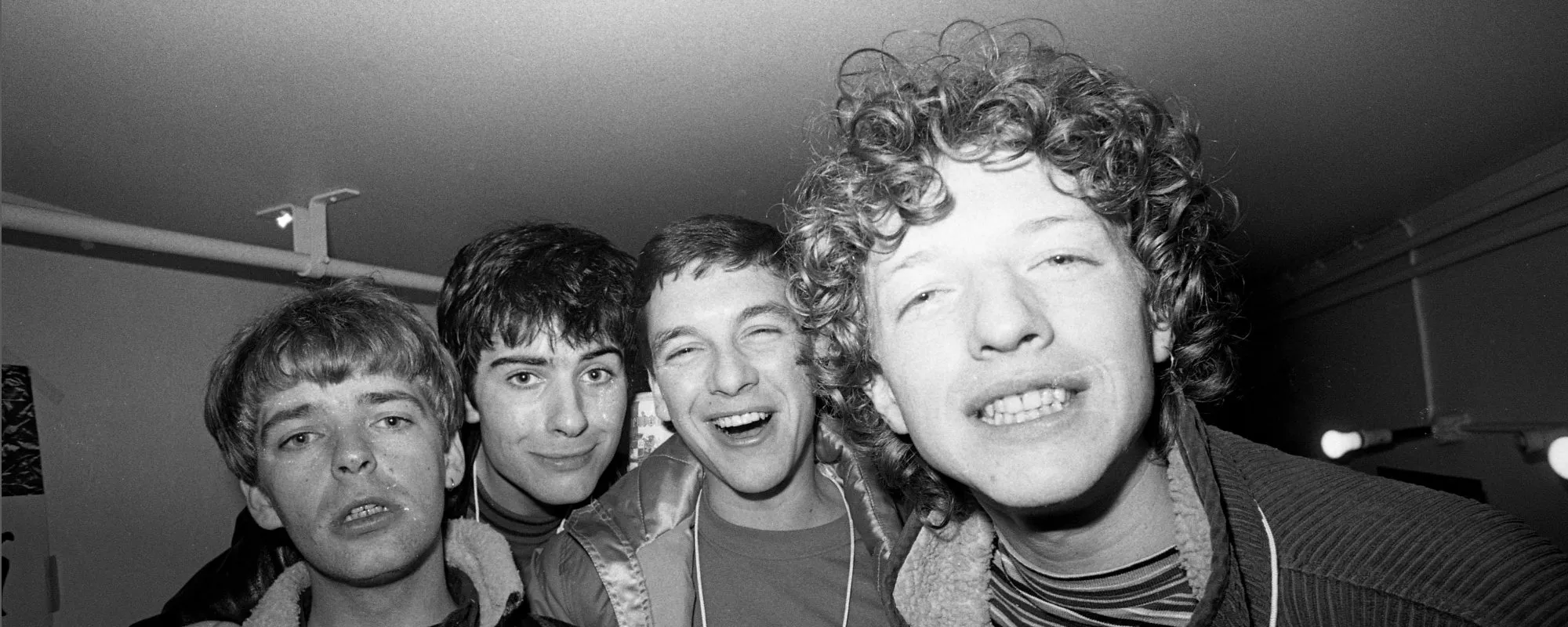
Their sound was anti-Madchester, swapping the thumping, pilled-up basements on the other end of the M62 for ballsy, melodic prowess. It resonated with the troubled Liverpool youth from Speke, Seaforth and Southport and beyond. For the working class, thatcher-ravaged Merseyside, it was an album that went beyond its singles and one whose intricacies and legend still inspire scouse musicians today.
Researching this post, I found a brilliant article about The La's and their impact. A series of scouers recounting their tales with the band, this one was my favourite, I think it perfectly sums them up.
Joe Maddocks of RATS said about a chance encounter with Lee Mavers outside the Cavern Pub after a Monday night open mic: “I opened the door after my set to go for a smoke, and it was fking Lee Mavers outside and he saw my first gig. He congratulated me, and I sat with him outside, asking about all the interviews and having a proper natter with him. I said, “How do you play 'There She Goes'?” and he went “Go on, I’ll teach you”, and there I was getting a guitar lesson from Lee Mavers on Matthew Street outside the Cavern. People were just walking past thinking it was an old fella because he doesn't look like a rockstar anymore.”
I think that's the perfect anecdote to one of Liverpool's most amazing songwriters. Who was not interested in fame and fortune, who just wanted to be a normal 'La'.
Thank you ever so much for reading.
For the city of Liverpool, a town of timeless melodies and all those who sail there.
Jack x